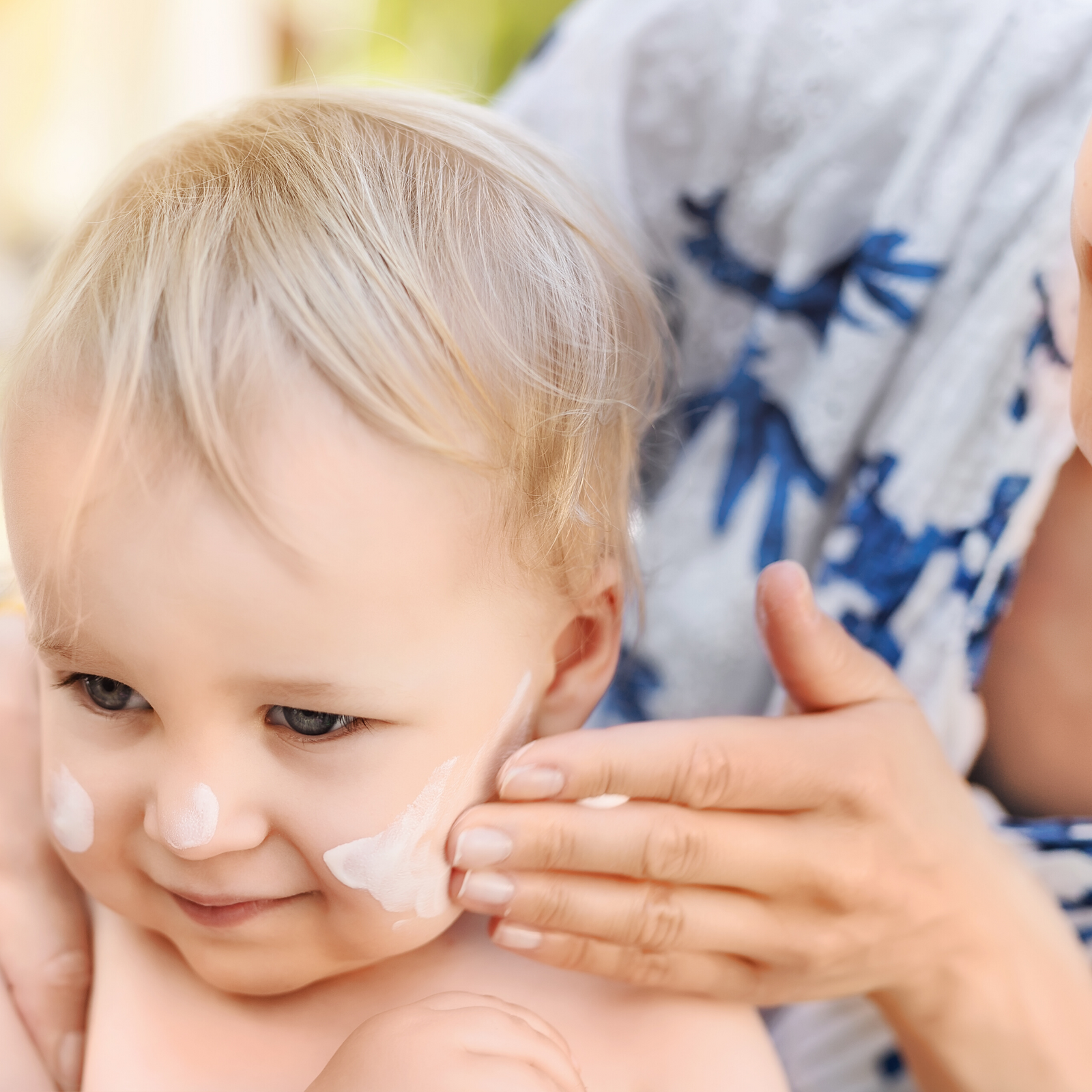Summer Safety for Babies Part 1: Sun Safety

As temperatures rise across the country, you might wonder how to keep your baby safe, cool, and happy during the summer months. Today, we’re kicking off a two-part series all about summer safety, and we’re starting with all things sun safety for babies.
LinnieLou asked board-certified pediatrician Dr. Kersha Pennicott for her best sun-safety advice; keep reading to learn why sun protection is important, which sunscreens work best for babies, and other ways to protect your baby from the sun’s harmful UV rays.
Sun Safety For Babies: What You Should Know
Sun protection is crucial for babies. In fact, Dr. Pennicott advised infants under six-months-old– and especially those under three-months-old–stay out of direct sunlight altogether.
“Baby and toddler skin are very sensitive,” Dr. Pennicott said. “Significant, repetitive exposure during childhood and adolescence increases lifetime risk for developing skin cancers like melanoma.”
But can babies wear sunscreen? Keep reading to learn more.
Babies and Sunscreen
Dr. Pennicott said, in the past, the American Academy of Pediatrics advised that babies under the age of 6-months should not use sunscreen. However, the organization recently loosened its guidelines.
“There is technically no lower age limit for sunscreen application recommended by the AAP, but I like to suggest parents start using sunscreen at three months of age if needed.”
All About SPF
SPF, which stands for Sun Protective Factor, should be considered when choosing a sunscreen for your baby. SPF measures how long sunscreen will protect from the sun’s harmful rays.
Dr. Pennicott recommends parents choose sunscreens with a minimum SPF of 15, which blocks 93 percent of UVB (Ultra Violet-B) rays.
But does higher SPF equal more protection? Not necessarily.
“SPF 30 blocks 97 percent [of UVB rays] and SPF 50 blocks 98 percent,” she said. “So you can see that higher SPF like 70 or 100 does not really provide a significantly higher level of protection.”
What Types of Sunscreen Work Best for Babies?
Dr. Pennicott said she prefers mineral-based sunscreens that include ingredients such as zinc oxide and titanium dioxide. Why?
“This type of sunscreen sits on top of the skin forming a physical barrier to harmful sun rays rather than being absorbed like chemical sunscreens,” she said.
She said that chemical sunscreens are okay, but she usually recommends those for older kids.
She noted that mineral sunscreens can leave a white cast on skin–especially on babies with darker skin tones.
When trying new sunscreens, do a patch test to see how your baby’s skin responds to it.
“One sunscreen might work wonders for your friends’ child but may irritate your baby, so it’s best to test it out,” she said.
Dr. Pennicott recommends the following sunscreens:
- Neutrogena Pure & Free Baby Sunscreen SPF 50
- Aveeno Baby Continuous Protection SPF 50
- Blue Lizard Australian Baby Mineral Sunscreen SPF 30
- California Baby Super Sensitive SPF 30
“Remember to apply the correct amount 30 minutes before going out and reapply every two hours after getting wet,” Dr. Pennicott said. “Rub it in well!”
Other Ways to Stay Safe in the Sun
First, avoid being outside between the hours of 10 a.m. and 4 p.m. when the sun’s rays are most intense, Dr. Pennicott said.
If you can’t avoid the outdoors, try to keep your baby in the shade and dress her in loose, breathable, tightly woven, long-sleeved clothing.
“I also really like clothing that has built in sun protection. Look for clothing that has 50+ listed in the clothing description,” she said.
And don’t forget a hat! Dr. Pennicott said babies should wear a wide-brim hat that covers their neck and face area.
Related: On the go? Check out this convenient, disposable solution for quick diaper changes
Wrapping Up
- Sun protection is crucial for babies. Infants under six-months-old–and especially those under three-months-old– should stay out of direct sunlight altogether.
- While the AAP says there is no lower age limit for sunscreen, Dr. Pennicott suggests parents start using sunscreen at three months of age, if needed.
- Look for mineral-based sunscreens that include ingredients such as zinc oxide and titanium dioxide.
- Avoid being outside between the hours of 10 a.m. and 4 p.m. when the sun’s rays are most intense and stay in the shade when possible.
Got any more summer safety questions? Be sure to let us know in the comments, and we might cover it in Part 2 of this series.


Leave a comment